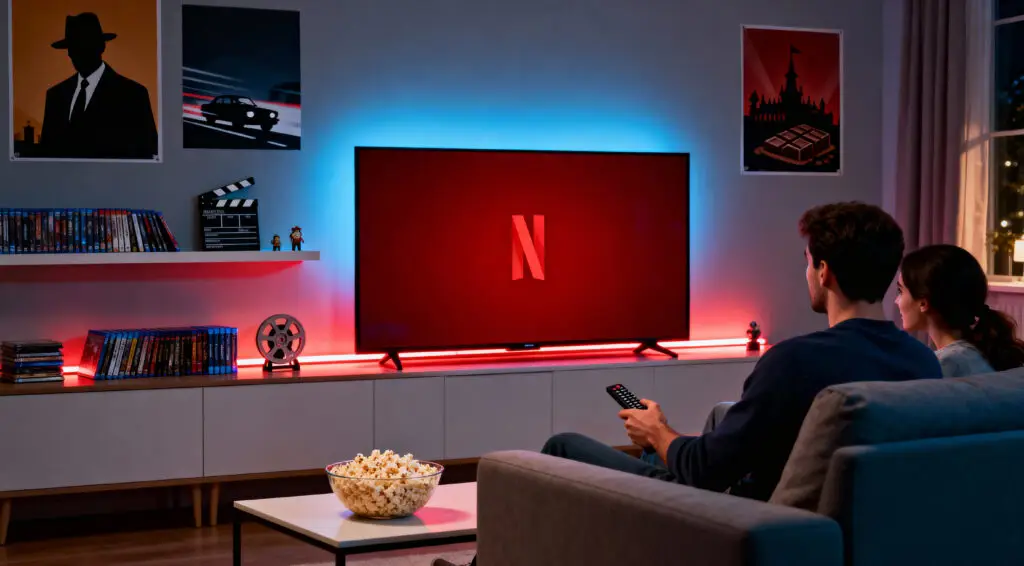Streaming Era Shows That Fandom Coordinated Hits Still Dominate
Golden’s return to the summit demonstrates how fan mobilization remains the most decisive variable in modern chart warfare. Streaming platforms reward consistent replay density rather than fragmented episodic hype, which means songs with cult style fandom momentum keep coming back to the top. Analysts say repeat surges reflect community consumption patterns rather than one-week novelty bursts.
Taylor Swift filled the top position for multiple weeks, yet Swift’s floor dipped enough to allow concentrated Huntr/x replay acceleration to overtake her. That dynamic highlights the algorithmic reality that a coordinated niche can beat a wider, less synchronized audience even in global pop settings.
Soundtrack Identity Becomes Competitive Chart Infrastructure
KPop Demon Hunters is now functioning like a narrative powered IP franchise that doubles as industrial scale A&R. Golden is not merely a song from a movie — the film provides emotional scaffolding that magnifies repeat listening because viewers re-experience scenes when the song loops. This effectively creates story-reinforced virality.
Other soundtrack entries surf that same structural advantage. How It’s Done and What It Sounds Like sitting inside the top fifteen implies that the film’s world building behavior controls chart gravity, not a single one-off viral title. Few franchises outside animation, K-pop, and video game IP accomplish this.
Global Streaming Audience Creates Layered Momentum Cycles
KPop Demon Hunters reached Netflix Top 10 charts in more than ninety countries. That indicates multiple regional fan ramps exist simultaneously. These regional on/off cycles allow Golden to recharge in one region while another pumps the song back into algorithmic priority.
Chart historians note that Billboard, UK Official Charts, and Spotify global charts have increasingly become “multi-region tug-of-war graphs.” Titles that operate across Asia-Americas-Europe windows benefit from rolling reacceleration instead of single-market fatigue.
Recommended Article: November Netflix Lineup Delivers Blockbusters, Cult Classics, And Fresh Originals
Competition From Legacy Pop Forces K-Pop To Adopt New Winning Tactics
Taylor Swift losing the No.1 spot reinforces that mainstream western pop is no longer guaranteed chart durability when facing hybrid narrative-IP-music ecosystems. K-pop is no longer purely sonics — it is story architecture, character meta fandom, lore reinforcement, and synchronized social amplification.
Huntr/x sits at the apex of this formula by combining animated anonymity, idol fantasy portability, and narrative immersion. This reinforces how future pop stardom may not always require a physical human artist.
Sub-Chart Activity Suggests Market Depth, Not Lucky Fluke
Four soundtrack songs in the UK Top 100 confirms that collective IP gravity exists beyond Golden alone. That level of distribution in a western region chart indicates multi-song retention patterns — extremely rare for film-linked soundtracks.
Analysts note that western radio integration could extend cycle length further because radio rotation trails streaming spike timing. That means Golden may not be done reclaiming the top again — the ninth week could be a midpoint.
Industry Now Views Animated Pop As Scalable Infrastructure
Record executives have observed that animated IP eliminates burnout risk, scheduling constraints, and brand scandals. Huntr/x can perform forever, can exist in multiple regions at once, and can release content at algorithmic tempo instead of human tempo. This reduces cost while maximizing chart economics.
Netflix becomes not just a distributor — but an incubator for synthetic idol ecosystems.
Chart Observers Expect More Rebounds Before Year End
Golden’s ninth nonconsecutive week at No.1 proves cyclic dominance rather than random volatility. Analysts see at least two additional potential rebounds if December soundtrack acceleration aligns with holiday binge consumption curves.
The question is no longer whether animated music IP can win — the question is how many cycles it can maintain before legacy acts are forced to mimic its structure.























